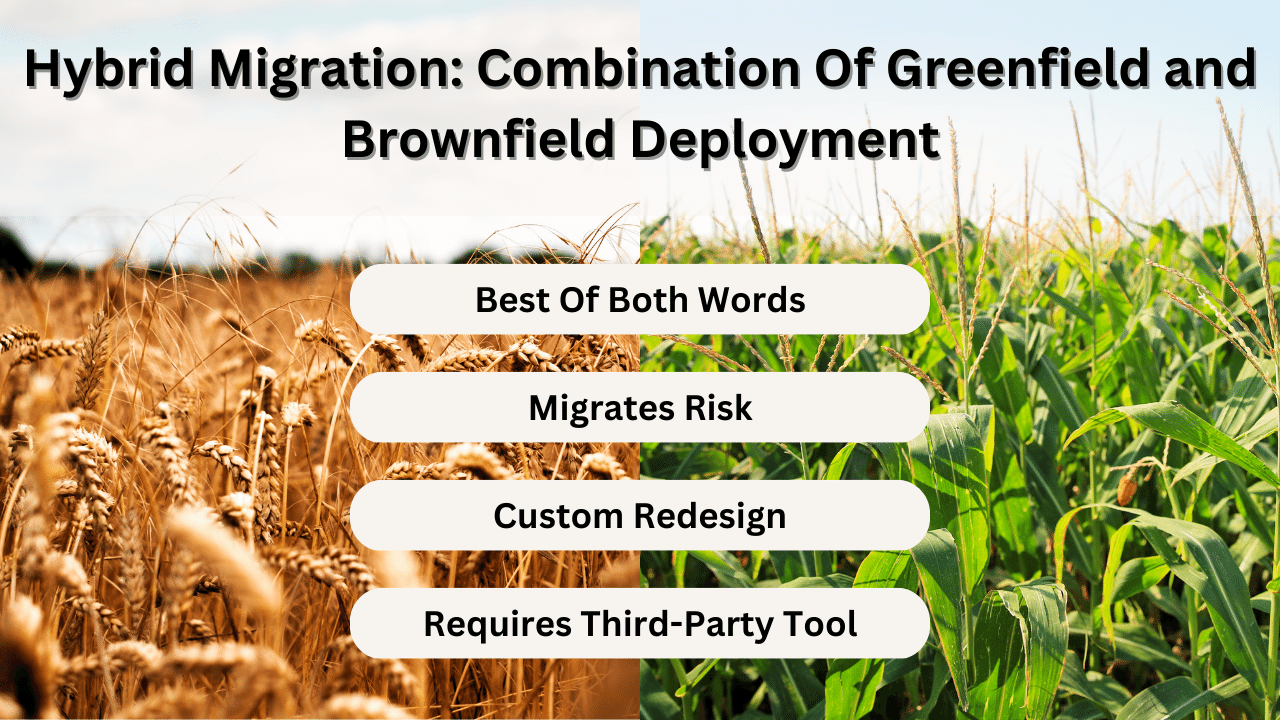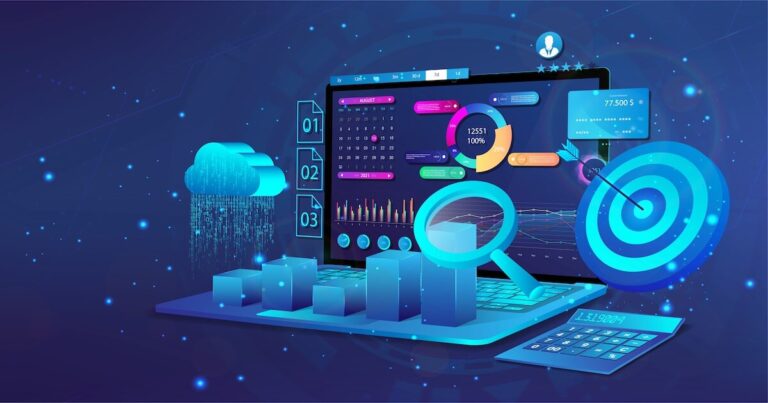Migrating to the cloud is hard…very hard. For any company to move an application to the cloud successfully is a monumental achievement. Doing so while also transforming your company into a cloud-centric, cloud-native company. Well, that’s even harder. But it is not impossible. In fact, it happens every day. Even companies that are non-tech are transforming themselves into cloud-centric, cloud-native companies. How can you increase your success in transforming your organization into a cloud tech leader?
One of the easiest ways to accomplish this is by assessing your application on the parameters of greenfield vs brownfield development requirements and then plan your cloud migration strategy. Amid the popular terms related to cloud migration such as lift and shift, refactoring, re-platforming, and reengineering, now you may be thinking what do greenfield and brownfield mean here and what does it have to do with your cloud migration needs? Without further ado, let’s understand what greenfield and brownfield development means, what their advantages are with cloud migration, and why you should pay attention to it when it comes to deciding on cloud migration solutions for your business.
What is Greenfield Software Development?
Greenfield software development is a strategy where everything begins from scratch and involves a complete reengineering of the organization’s processes and workflows for an application. A greenfield approach enables companies to predefine transformation objectives, resulting in lower total-cost-of-ownership and faster time-to-value. Many companies understand it as greenfield projects where new resources such as computers, networks, websites, software packages, cloud software, and telecom or data center installations are deployed to support rapid innovation. Within an organization, greenfield deployment opportunities emerged when the rapid pace to change in IT rendered legacy systems no longer cost-effective or obsolete.
Key benefits of Greenfield Software Development?
Building something totally new provides the flexibility needed for standardization and simplification in the migration process. You work with new architecture, platforms, and other technologies in greenfield development processes. You begin from scratch right from scoping requirements, processes, and design aspects, and strategize the techniques all through to production. As you work with modern tools, processes, and technologies, any issues that arose during the testing phase would be resolved, and the client would receive a flawless product. Let’s check how greenfield development and migration benefit you:
- Customization: As you design and develop a completely new application with new architecture, you get the free hand to customize the requirements the way you want. It allows you to overcome problems existing with the legacy system, remove all persistent limitations and achieve performance and usability for your applications and operations.
- Scaling efficiency: One of the biggest advantages of cloud migration solutions is scaling up and down resources as required. It enhances the benefits of greenfield development as you can cater to demand as it peaks up and dwindles down while paying the cost of resources that you consume.
- Innovation: Developing applications with a greenfield strategy allows teams to innovate better. You don’t need to confirm the new application development with the old architecture. Teams leverage the freedom that comes with cloud computing and innovates on a regular basis hence faster innovation with deployment comes up frequently.
- Optimization: Greenfield development frees IT teams to innovate, look at other tasks and optimize processes for the growth of the organization. This has been possible because the cloud allows them to optimize infrastructure and processes in much better ways. They leverage automation, security policies, version controls, and other methods which provide faster solutions for infrastructure setup and deployment, hence the IT team doesn’t need to be tied up with application needs.
Common Challenges Of Greenfield Software Development
Greenfield cloud migration process helps enterprises to revise, unify, and simplify business processes with its best practices, but it’s not that simple to implement. There are several cloud migration challenges when it comes to implementing greenfield development.
- Disruptive To Entire Organization: Cloud migration is difficult as companies have to support business continuity during the migration. Henceforth, it brings on more responsibility for the professionals and changes the operating model for which experienced help is needed.
- Steep Learning Curve: If the team is more used to working with legacy software, learning how to use the cloud and its features could hold you back from leveraging the full potential of new development and migration. They will need time to learn cloud options quickly and build new strategies for storing data and using computing resources for efficiency and cost optimization.
- Cost: Cloud platform brings promising returns after migration but the actual process of migration incurs additional costs to your company. It is harder to estimate system usage in the cloud. Therefore, it is highly recommended to always plan and perform cloud migration with the help of an expert cloud migration partner.
Comparison Overview of Greenfield Development vs. Brownfield Development
| S. No. | Aspect | Greenfield | Brownfield |
| 1 | Project direction | Vague | Clear |
| 2 | Development effort | Everything needs to be built from scratch, hence require development efforts | Basic foundation is already there, hence comparatively less |
| 3 | Dependency on older application | No | Substantial |
| 4 | Development time | Comparatively takes more time to implement modern solution | Comparatively takes less time as systems are tweaked or new things implemented on an existing one |
| 5 | Degree of risk | Comparatively higher if the team is not well versed or skilled with cloud tools and technologies | Comparatively lower as the team works with legacy systems and processes mostly |
| 6 | Re-engineering | No | Likely |
| 7 | Costs | Can be costly if there is no clear vision | Can be costly due to the use of legacy code |
What Is Brownfield Software Development?
Brownfield software development refers to upgrading an existing application rather than transforming it. This development approach allows migrating existing workflows and systems over to the newest version of technologies or infrastructure. The approach lets you re-evaluate your existing processes and port over the ones that are working fine. Your engineering and QA team do the active participation and focus on a checkpoint to retain applications, especially those that are hard to recreate. The on-premise infrastructure also contains a large number of proprietary systems as well as crucial data and information. Brownfield migration implementation allows organizations to take advantage of the old systems with a process known as selective migration, whereby they can limit business disruption.
Key Benefits Of Brownfield Software Development
If you prefer to leverage the existing investments and adopt the new innovations that come from time to time, then brownfield development would be good. With a brownfield project, you can migrate most of the existing business processes, enterprise structure, and data to the new system while paying little attention to process redesign. The approach ensures a short project timeline and less disruption to the business. Let’s check other benefits of brownfield development and migration for your organization.
- Familiar Terrain: With brownfield projects, your team works with legacy code and components. It provides them with familiar terrain to walk to since they are used to working with a considerable part of the infrastructure. This level of familiarity allows you to work and move faster without needing much resources and time.
- Cost-effectiveness: Data plays a crucial role in cloud migration and it incurs transfer costs. Therefore it could be a huge expense to migrate all things at the same time. But in brownfield deployment, you migrate only certain operations from your legacy systems at a time. It allows you to track or keep an eye on system usage which further helps in cost estimation for cloud infrastructure.
- Easy Adoption: Nearly every application can get built into a docker container and can get deployed to the cloud. Henceforth, brownfield offers simple adoption to newer approaches while making the most of the existing on-premise infrastructure.
Common Challenges Of Brownfield Software Development
Moving an existing application to the cloud offers the opportunity to recreate and optimize critical business processes. Simply porting everything over from your previous version means missing the opportunity to innovate. Because a brownfield implementation can only happen on-premises due to the complexity of porting over existing customizations and workflows – you can’t take advantage of the cloud’s many benefits. Let’s talk in detail about the challenges of going with brownfield development and deployment.
- Limitations: One of the disadvantages of brownfield software development is it brings with itself the limitations that exist with older infrastructure. As you work around limitations, you may not experience the speed or innovation capabilities greenfield offers.
- Rigidness: Since you decide to stay with legacy apps, you will still need to support on-premise infrastructure with new resources and perform maintenance for it. Though you embark on innovation with a few application development and migration, costs will still incur for under-utilized resources to your organization.
Key Questions You Should Ask That Help You To Decide Which Migration Scenarios Would Be Best For You? Greenfield vs Brownfield Development
| Key Questions | Greenfield | Brownfield |
| Do you want to keep solution enhancements or your transaction data history? | No | Yes |
| Does your system fulfill all conversion prerequisites? | No | Yes |
| Do you need a phased business roll-out? | Yes | No |
| Do you need a renewal of your complete application solution? | Yes | No |
| How do you perceive your current system? | Innovation blocker | Key asset |
Hybrid Approach: Amalgamation Of Greenfield and Brownfield Migration
Hybrid implementation models allow you to choose where you want to redesign and re-engineer (greenfield) and where you want to work with what you have (brownfield). Hybrid is best for large enterprises with a lot of data and complex systems. Because the codebase has a high level of customization tailored specifically to the business, organizations may also decide to preserve existing systems.
The cost of upgrading to newer technology is frequently outweighed by the fact that these systems continue to satisfy the needs of the company. The modernization of a legacy system can be quite labor-intensive. For example, developers must comprehend data formats (which connect to any number of downstream systems). The software might also have been created using an older programming language, similar to the COBOL for example. This implies that all source code needs to be examined and completely rewritten. Building new software is complex and can be a multi-year project with a high cost due to the timing and the sheer number of software developers needed.

Greenfield solves this problem by allowing organizations to completely replace heavily customized, older legacy technology with cloud-native solutions. Though cloud migration can come with another set of challenges, decision-makers can work on extensive project plans and achieve the desired results from greenfield development and migration.
How To Choose The Best Cloud Migration Approach For Your organization?
Deciding which migration strategy implementation is right for you depends on multiple factors. Once you have defined the business and built a business case, you can select the best approach, develop a strategy, create your roadmap, and make it happen.
Just be cautious with brownfield projects as the processes could be more challenging and arduous and you will need to have a top-class development team who are ready to take on challenges and perform meticulous design and testing tasks. Greenfield projects however help catch the best spot on the IT bandwagon. But note it down as today’s Greenfield is tomorrow’s Brownfield.
If you need more clarity on deciding applications and use cases for greenfield vs brownfield deployment, let us assist you! We are a leading cloud consulting partner with public, hybrid, and multi-cloud development and deployment.




